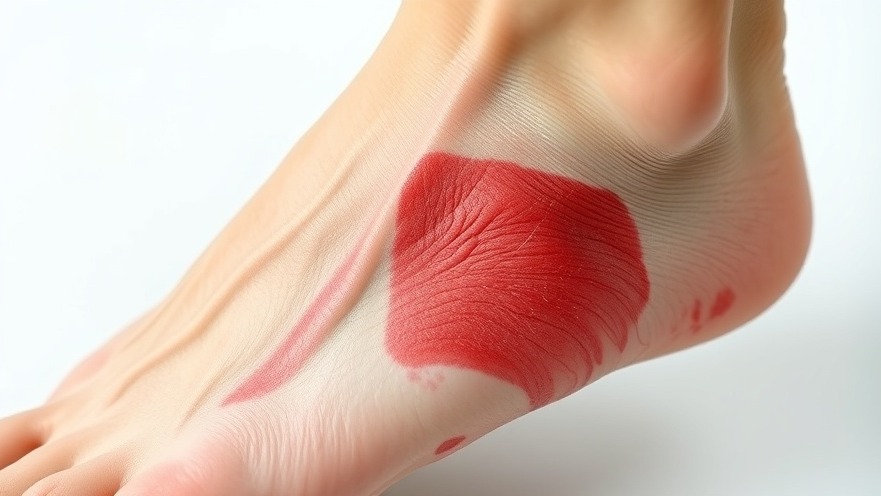
Understanding Diabetes and Its Impact on Foot Health
Diabetes can sometimes feel like a silent predator, slowly impairing health without any warning signs, particularly affecting your feet. Poorly managed diabetes does not merely cause elevated blood sugar levels; it can wreak havoc on nerve function and blood circulation. If you've ever found yourself dancing through life oblivious to your uneven soles, you may want to pause and reconsider. For many with diabetes, this ignorance can lead to complications like neuropathy and peripheral arterial disease, which are the stepping stones to severe issues such as ulcers or even amputation.
The Alarming Statistics of Diabetes-Related Foot Disease
It's startling that in Australia, someone is diagnosed with diabetes every 5 minutes, and terrifyingly, 1 in 5 individuals will face diabetes-related foot issues in their lifetime. Despite these concerning statistics, there is a light at the end of the tunnel—maintaining regular consultations with a podiatrist can help catch complications before they escalate. Sadly, approximately 4,400 Australians undergo amputations related to diabetes annually, but 85% of these could have been prevented through early and effective intervention.
What Are the Warning Signs of Peripheral Neuropathy?
Poor circulation and nerve damage due to diabetes result in peripheral neuropathy, leading to decreased sensation in the feet. Just imagine strutting into a room, completely unaware of a blister forming on the sole of your foot—this is a reality for many. The lack of feeling can result in unnoticed injuries and blisters, which can escalate into infections that require serious medical attention. Being informed is being empowered. If you can keep an eye on your foot health, you can significantly lower your risk of anything catastrophic.
Proactive Measures to Protect Your Feet
A little daily diligence can save you from severe complications down the road. Here are some actionable tips:
- Daily Foot Inspections: Just like a seasoned dancer inspects their shoes, make foot inspections a routine commitment. Look for any cuts, blisters, or anything unusual.
- Regular Podiatrist Visits: Appointment with a podiatrist should be non-negotiable. Discuss any foot concerns, and receive professional insight that can help prevent complications.
- Wear Proper Footwear: Whether you’re hitting the dance floor or just strolling at home, wear shoes that support your feet and offer protection from injury.
Being proactive not only helps maintain your foot health but can also give you peace of mind.
A Journey Towards Recovery and Health
There’s hope and help available! Equip yourself with knowledge and surround yourself with professional support. If you suspect any foot complications arising from your diabetes, take action—schedule a check-up with a podiatrist today. Taking steps earlier rather than later can make all the difference in preventing complications. Remember, your foot health is an extension of your overall well-being.
In conclusion, diabetes can have a lasting impact on foot health, but awareness and action are your strongest allies. Don't let the fear of complications hold you back from living your life; use this information to empower yourself. Embrace the importance of foot health and make an appointment today—because a happy foot leads to a happy life!
 Add Row
Add Row  Add
Add 




Write A Comment